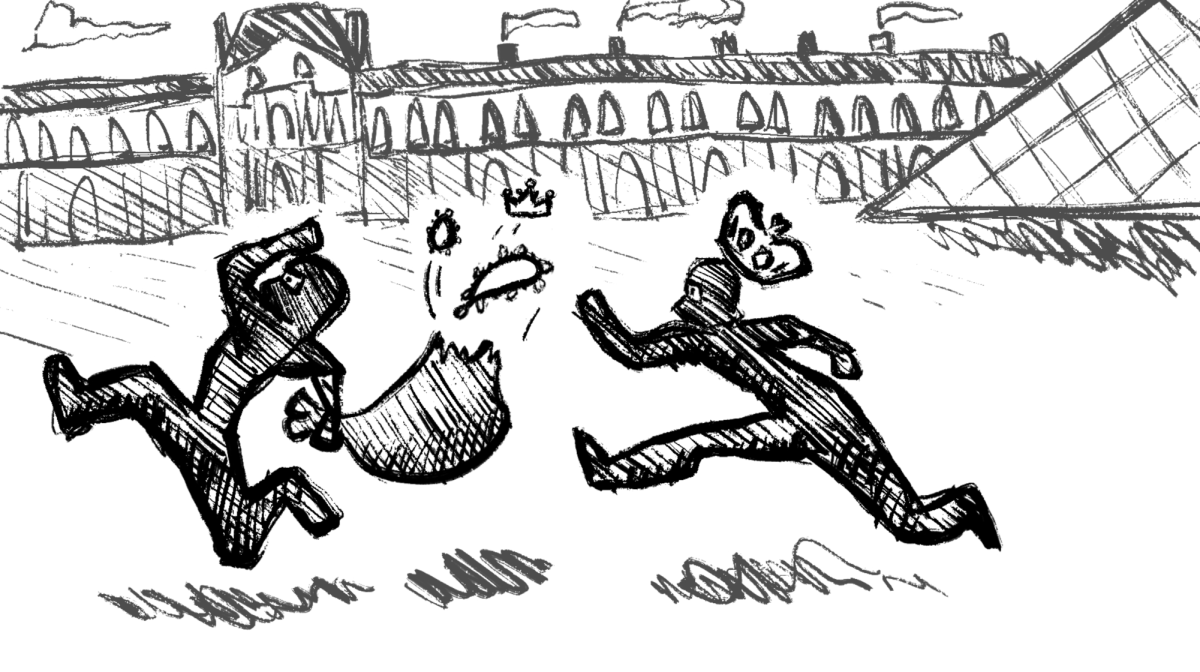
ILLUSTRATION: ALEXIS KAIN ’27/THE HAWK
This week, I’ve swiped past “Get ready with me to rob the Louvre” and “Here’s what I would’ve stolen instead” videos as the internet reacts to the recent jewelry robbery at the Louvre Museum in France. Major news media rushed to cover the Hollywood-worthy heist, playing off people’s snowballing fascination with the story. But what exactly about this break-in has captivated the world?
Let’s trace it back to 9:30 a.m. Oct. 19, when the thieves broke into a window on the first floor of the Louvre. They used a mechanical lift, and two of the four thieves climbed up to the balcony and used power tools to enter the building. Then, they used disc cutters to break open the glass cases while security guards were evacuating visitors. The thieves escaped back through the window and drove away with the two other thieves on scooters at 9:38 a.m., stealing nine items. The entire affair lasted seven minutes but left its mark as the “heist of the century.”
As French investigators scrambled to track down the culprits, the internet seemed to be thrilled with the story. Social media is ripe with comments rooting for the thieves behind this bold plot. Perhaps these sentiments are fueled by the classic Robin Hood tale of the common man taking from elitist institutions. Hollywood movies like “Ocean’s Eleven” and “Inception” have romanticized heists as glamorous and daring. People view art heists as “victimless” in comparison to the brutal crimes that are usually broadcasted in the news. While most people don’t condone theft on a regular basis, it’s hard not to be intrigued. Maybe it speaks more about ourselves that we’re willing to overlook the crime for its theatrics.